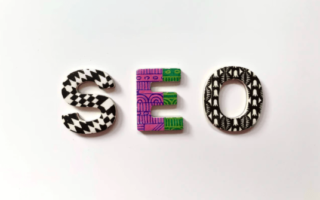You don’t need to be a business mogul to understand that E-Commerce has different effects on a variety of small beauty brands. Many strategies underscore the value of E-Commerce in the growth of their businesses, and it’s hard to deny such claims. However, this doesn’t mean that it doesn’t have its negative impacts.
E-commerce can impact small beauty startups and businesses, which can be detrimental to their growth. Whether you’re integrating AI into your skincare solutions or you sell simple soaps and creams, here’s what E-commerce does to your business. We’ll also teach you how to mitigate these issues to help your brand grow.
E-Commerce Reduces Personal Touch and Human Connection
One of the biggest impacts that e-commerce has on small businesses is the loss of personal touch and close relationships. Back before the advent of the internet, many beauty brands thrived at their ability to connect with customers. It allowed customers to enjoy the skills of an expert who can give them the right suggestions.
With e-commerce, all your products are available from an online catalog. All you see is a picture of a product – likely together with a product description and other buzzwords. This removed the humanizing side that beauty brands should strive for. Experts used to be able to guide customers, creating a bond between the brand and its clientele.
Humanizing Your Beauty Brand
Humanizing your small beauty brand is a matter of creating ways to further engage with your customers. The simplest way to add a “face” to your business is to provide a solid customer service hotline/chat line. This will allow your customers to connect with you if they have any questions about your products and services.
Your customer service does not even have to be a dedicated team of employees or an outsourced service. Your social media pages can suffice while you’re small, especially if you’re the one managing it. As most complaints come from social media, you can resolve issues where your potential customers are on social media.
If you want your customers to experience the product before they buy, consider if you still need a brick-and-mortar business. You can even expand your business via a local distribution model, much like how big brands used to do it when they were smaller.
Understand your audience and be real. What customers want are products that they feel are made for them. Nurture a relationship with them through your marketing efforts and they will reward you with sales and brand loyalty.
E-Commerce Adds To Your Overhead Cost
When you manage business expenses, one of the things that you need to consider is the cost of operation. The overhead can be a pain, and part of that overhead comes from operating your website and e-commerce software. Even when you do it with big chain e-commerce stores, there’s still a level of cost for you.
Web hosting is getting cheaper every year and is quite cheaper compared to keeping a physical store. Even then, you need to set up the website, design it, add your products and services, pay for plugins, and more. Eventually, you would need to pay for a web developer to maintain the website.
You’ll also need more people to write the product descriptions on e-commerce platforms, take the images, and share them online. It’s cost after cost, and e-commerce can be a problem regardless.
Reduce Your Operational Cost With Smart Marketing
One of the best ways to mitigate the overhead costs of e-commerce is to learn the process yourself. You can never move away from operational costs but you can try to educate yourself on simple ways to build your business. You don’t even need advanced marketing techniques for your business just yet.
Start with a simple website to act as the primary face for your brand. Use traditional e-commerce platforms to reach out to a bigger audience, rather than build an e-commerce website yourself. This saves you money and the cost of building traffic to your site until you are ready to do so.
Play the social media game. Small beauty brands excel on social media because they have something to show off. Get some photos of your products, especially when applied to models. Video marketing is also a powerful tool that can help show off the good sides of your brand to a wider audience.
E-Commerce Has Never-Ending Competition
One of the biggest issues you’ll experience in e-commerce is the big sea of competitors vying for customer attention. On the internet, everyone wants the customer’s limited attention and there are so many ways to lose it. Everyone is your competition – whether directly or indirectly, as you want your audience to focus solely on you.
Let’s face reality: the beauty niche is not an easy market to penetrate – much more to dominate online. It’s a fickle niche where there’s always a new product on the corner that may take your target audience. Some businesses spend more on marketing and advertising which can bounce you off.
The more competitive the niche is, the more expensive the ads are. The bigger and older the e-commerce websites, the harder they are to put away.
Stand Out With Asymmetric Marketing
With e-commerce, your brand will always compete with others. There will always be a bigger fish in the sea, but you don’t have to sacrifice anything. The answer is to try a different marketing strategy for your small beauty brand. Don’t try to outgun big businesses with your e-commerce efforts but rather carve out your niche.
If you’re not getting good ROI from your social media ads, why not try your hand at on-page SEO? Build your organic rank by creating valuable content. Take advantage of influencer marketing by letting influencers try your brand and have them link back to your site.
Build blog posts and retarget your ads to them. This will help get customers on your side and build an emotional bond with your beauty brand. In most cases, small beauty brands should connect with customers and make them feel that your products are made for them.
Think out of the box. Tell authentic stories and embrace the personalization of your beauty brand. Don’t think of the big shadow of the potential competitor. Rather, see to it that you can make your customers not only enjoy what you offer but connect on a personal level with what you offer.
The Bottom Line
E-commerce has its place in the modern world of business. Even then, small beauty brands can suffer from the lack of human touch, the cost of marketing, and the sea of competitors waiting at every corner. Knowing how to keep your brand human can be a valuable asset for your beauty brand.
Small beauty brands have a great chance of success. It’s a matter of knowing your audience and finding ways to stand out. Follow these wonderful tips and you can take advantage of all the good things that e-commerce gives without all the bad things affecting your brand.
- Why Your Startup Should Start as It Means to Go On
- Empower Your Business with GridPanel Comprehensive Web Scraping Solutions
- Understanding the Role of Elastic Fibers in Modern Fabrics
- Cyber Defenders: A Look at the Global Cybersecurity Industry
- Elevate Your Business with Strategies from an Entrepreneur Author




